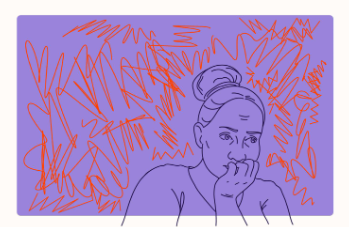Every year, millions of teens are diagnosed with anxiety. The word sounds frightening, and the true meaning is just as scary. Anxiety, as described by the National Library of Medicine, is a fear, dread, and uneasiness, usually associated with stress. While anxiety can be caused by things like homework, or sports, it can quickly develop into a massive weight on a teen’s back, becoming a disorder. An estimated one in eight children from ages 13-18 develop an anxiety disorder, the National Institute of Mental Health states. Many young adults carry these disorders throughout their lifetime, and it often isn’t something to
The crisis of mental health diseases that are rapidly developing in young adults is alarming. And with the 5 million deaths each year from these disorders in mind, it is hard to ignore this prominent issue. But why, out of all the disorders, is anxiety so common in many teens around the world? Well, experts say it most likely has something to do with the all loving, all mighty, social media. Research from Ballad Brief’s “The Rise of Anxiety and Depression Among Young Adults in the United States” indicates that spending excessive time on social media increases the risk of developing mental health issues by 15-20%. On social media apps, with all the stress to be your very best version of yourself online, you forget to take care of yourself in person. Seeing filtered, unrealistic images of others also creates a fake portrait of someone else, making teens feel socially and emotionally isolated from their friends, and even comparing themselves with strangers. Mental health is like a glass box, and social media acts like a hammer, cracking this glass with standards too high for anyone to reach.
Academic stress also contributes to the constant stress in teens. Heavy workloads and short deadlines are easy factors that create an unhealthy routine. Rio Reyes, a 14 year-old attending the Academy of Allied Health Sciences at UCVTS, states that her school work is taking a huge toll on her mental health. “If there’s a lot due in a little amount of time, it gives me high anxiety” she states, “and it makes me overwhelmed that I won’t be able to complete all my work.” This is common in so many kids across the globe. From a young age, teens are told to work hard to become successful, but too much of this pressure can break your teenager. This is often where procrastination comes into play, making them even more stressed.
The consequences of anxiety aren’t just turning in a history project past the due date, but instead could be much worse. In the U.S., mental health diseases such as anxiety and depression lead to high rates of suicide and self-harm. Over 90% of suicide attempts and deaths are caused because of a diagonalisable mental health illness. Anxiety disorders also lead to the abuse of substances such as alcohol, drugs, cigarettes, and vaping. So called “stress relievers” like this actually worsen symptoms of anxiety. According to the National Drug & Alcohol Research Center, stimulant drugs speed up your nervous system, making it harder to sleep, and increasing the risk of severe panic attacks. Many of these substances don’t seem to help the pain, and in the long term, make it worse.
While mental health illnesses like anxiety seem like something that can take over your whole life, with the right treatments, there is still hope. Therapy is commonly a solution with any mental illness, and for young adults, it is a great way to easily access the correct help needed to feel better. For example, psychotherapy, also known as “talk therapy,” is a specific type of therapy used for people with anxiety disorders, teaching them new behavior tactics. Meditation practices such as MSBR (mindfulness- based stress reduction) reduce stress by regulating emotions and tension. For severe cases of anxiety, it is best to get treated by a healthcare provider, with certain medications being more effective to most. Regardless of the immense pressure often felt from anxiety, it is important to know that seeking help will always be an option. Although teens with disorders like anxiety and depression often feel isolated, and it can be frightening to ask for help, with the proper support, there will always be a way out.
Works Cited:
Meier, Sandra M et al. “Increased mortality among people with anxiety disorders: total population study.” The British journal of psychiatry : the journal of mental science vol. 209,3 (2016): 216-21. Source
| Editor, News. “Mental Health Challenges of Young Adults Illuminated in New Report | Harvard Graduate School of Education.” www.gse.harvard.edu, 24 Oct. 2023, Source |
Anxiety + Substance Use Contents. Osorio, Emma Kauana, and Emily Hyde. “The Rise of Anxiety and Depression among Young Adults in the United States.” Ballard Brief, 2021, Source
“The Connection between Substance Abuse & Panic Attacks.” Healthyliferecovery.com, 24 May 2023, healthyliferecovery.com/substance-abuse-and-panic-attacks/. National Institute of Mental Health. “Anxiety Disorders.” National Institute of Mental Health, National Institute of Mental Health, Apr. 2024, Source
Mutchler, Cristina. “Generalized Anxiety Disorder: Symptoms, Causes, Diagnosis, Treatment and More.” Health, 9 May 2023, Source

 The Science of Learning a New Language: How Does it Work?
The Science of Learning a New Language: How Does it Work?